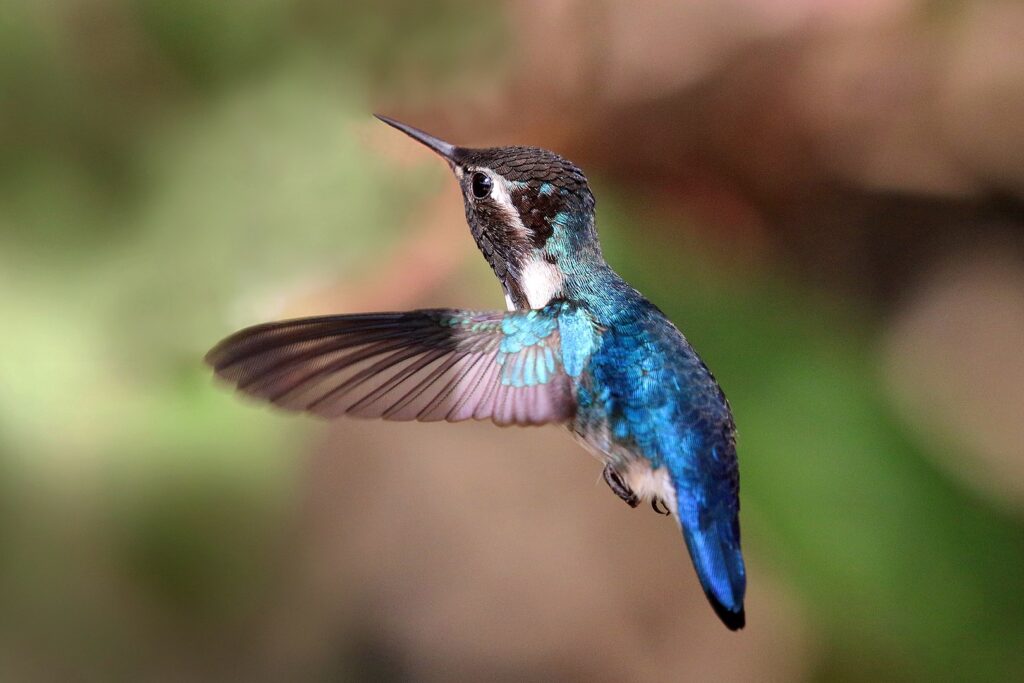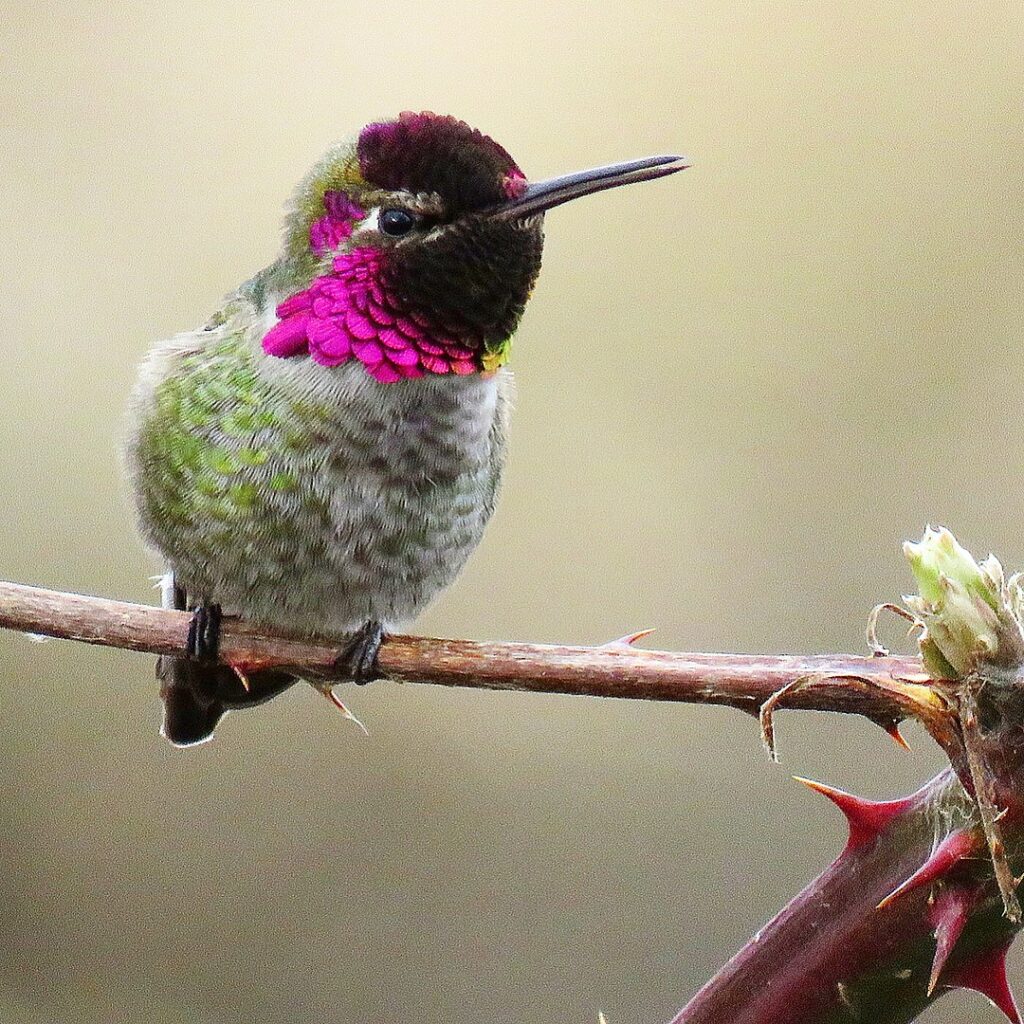Lorem ipsum dolor sit amet, consectetur adipiscing elit. Ut elit tellus, luctus nec ullamcorper mattis, pulvinar dapibus leo.
Neat to know ~ Creature of the week
Lorem ipsum dolor sit amet, consectetur adipiscing elit. Ut elit tellus, luctus nec ullamcorper mattis, pulvinar dapibus leo.

Bee Hummingbird, Cuba
Photo: Charles James Sharp, CC BY-SA 4.0

Anna’s Hummingbird
Photo: EllaMay81, CC BY-SA 4.0
Hummingbirds
2021-01-12
– All 300-plus species of hummingbird are found in the Western Hemisphere, and most live in areas near or at the equator. 100 species can be found in the equatorial lands of South America. Costa Rica, in Central America, has documented some 50 species. Only about 15 species are native to the United States.
– Many hummingbird species have deservedly colorful names, like… the Green Crowned Brilliant, the Snow Capped, the Velvet Purple Coronet, the Green-Throated Mango, and the Ruby Topaz. Two of the most prevalent are the Rufous and Anna’s Hummingbirds.
– Hummingbirds may be small, but don’t underestimate their grit. They are extremely territorial and will boldly fight off much larger intruders like crows and even hawks.
-The many different species of hummingbird have just as many different ways of communicating. They use their voices to signal to each other, particularly when danger is near.
Read on to learn more about the spellbinding hummingbird.
Superlatives
- The smallest bird on earth is a hummingbird native to Cuba, called the Bee Hummingbird. It is only 5-6 cm long!
- At 1,260 beats per minute, the hummingbird’s tiny heart thumps faster than that of any other bird. (By comparison, a human heart beats between 60 to 100 times per minute.) Hummingbirds take more than 200 breaths per minute. This increases when they are on the move.
- Probably not surprisingly, hummingbirds have the fastest wing beats of any bird. Their wings can rotate (they don’t flap) 80 times per second! This is what creates the humming sound for which they are known.
Sharp-eyed lookers
- Scientists have determined that hummingbirds can discern colors that humans cannot. While our eyes, as well as those of most other primates, have three color receptors (for red, blue, and green), birds have four. On the other hand, hummingbirds have no sense of smell.
- Hummingbirds have relatively large chest muscles to help them fly. These muscles make up more than 25% of their body weight!
- One of the most distinctive features of many hummingbird species are their jewel-like colors. Interestingly, when we see the dazzling glint and glimmer of a hummingbird, it is less because of actual pigmentation in the feathers and more because of the way the feathers are structured and ordered on the bird’s body. The angle at which light hits the feathers, as well as moisture levels in the air, and the perspective from which the hummingbird is seen, are factors which create the brilliant colors we see.
Hungry Hummingbirds
- Hummingbirds eat more than one and a half times their body weight every day.
- These little dynamos need to eat often in order to keep up their energy. They eat every 10-15 minutes, feeding on the nectar of up to 2,000 flowers per day! When food is short and temperatures drop, hummingbirds may fall into what’s called a “torpor.” This is when they go into a kind of half sleep. Their heart rate slows drastically, and they are able to conserve energy.
- Hummingbirds also eat insects, which they are able to capture in midair. When given the chance, they might grab them out of a spider’s web – and eat the spider while they’re at it.
- Besides nectar, insects, and spiders, hummingbirds sometimes also eat sap.
Flitting and flying like no other
- Hummingbirds can cover large distances at relatively high speeds. A normal speed could be up to 30 miles per hour. In a dive, a male hummingbird can reach an astonishing 60 miles per hour!
- Many hummingbirds migrate north to the U.S. and Canada in the spring to nest and then south to tropical regions in autumn. The entire trip back and forth can be up to 1,600 km (995 miles) for many species. The Rufous makes the longest trip of any hummingbird – almost 5,000 km (3,000 miles). They can fly for hundreds of miles without stopping.
- Rather than flapping their wings, hummingbirds rotate them in a figure eight motion.
- Hummingbirds are remarkably agile. While in flight, they can abruptly change direction, stop, hover in place, turn upside down, and even move backwards!
- By contrast, they are rather clumsy on their feet. They have short, weak legs that are better at shuffling or scooting than walking or hopping.
Single moms and tiny nests
- Unlike many other bird species, hummingbird parents don’t bond for life. Instead, after mating, a female is on her own to raise her young. A male will first court a female, often with a stunning performance of flight tricks, during which he will move in such a way that the sunlight picks up the shimmer in his iridescent feathers. He might also belt out a serenade or two to gain her affections.
- Females will construct their nests out of whatever plant matter they can find and use spiderwebs to help stick it all together. Hummingbird nests are usually around the size of a thimble, just large enough to accommodate hummingbird eggs, which are about the size of jellybeans.
- After being born, hummingbirds remain in their mother’s nests for three weeks. Within that time, they will grow to almost full size. At that point, their mother will see them as competitors and chase them out.
- The typical life span of a hummingbird is three to six years, with females usually living longer than males.
How to support hummingbird homes
- A lot of hummingbird habitats are being affected by climate change and human activity. If you have a yard, or even just a windowsill, you can help hummingbirds have healthier homes.
- Plant as many native plants as possible. These provide the most nectar for the hummingbirds in your area.
- Don’t trim too many branches off of trees and shrubs. These provide perches for hummingbirds.
- Tell everyone you know to avoid using pesticides and other poisonous chemicals in their yards. These kill insects that hummingbirds feed on.
- Keep an eye out for these exquisite creatures. They will reward you for your efforts, simply by showing up in your yard and gracing it with their colors, sounds, and extraordinary flights.
Sources: Audubon, “How to Create a Hummingbird-Friendly Yard,” https://www.audubon.org/how-create-hummingbird-friendly-yard; Morell, Virginia, National Geographic, “Hummingbirds see colors we can’t even imagine,” https://www.nationalgeographic.com/hummingbirds-see-colors-outside-rainbow/, June 15, 2020; Bird, David M., Bird Watcher’s Digest, “Hummingbird Behavior,” https://www.birdwatchersdigest.com/hummingbirds/behavior; Warren, Tom, The Old Farmer’s Almanac, “Fascinating Hummingbird Facts,” https://www.almanac.com/fascinating-hummingbird-facts#, September 8, 2020; Hummingbird Central, “Hummingbird Facts and Family Introduction,” https://www.hummingbirdcentral.com/hummingbird-facts.htm; Mayntz, Melissa, The Spruce, “25 Fun Facts About Hummingbirds,” https://www.thespruce.com/fun-facts-about-hummingbirds, October 13, 2020.